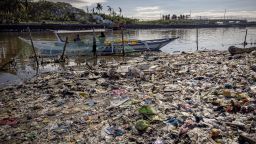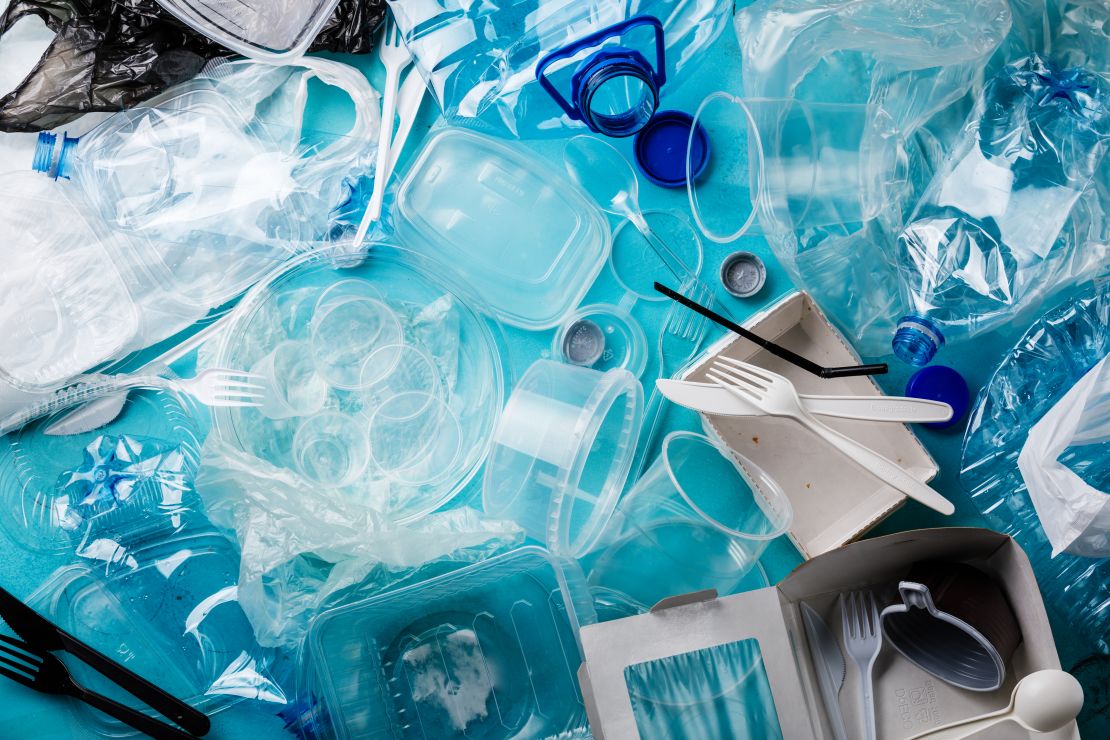How harmful can ultra-processed foods be for us? – BBC News
“How much plastic will you have for dinner, sir? And you, ma’am?” While that may seem like a line from a satirical skit on Saturday Night Live, research is showing it’s much too close to reality.
Ninety percent of animal and vegetable protein samples tested positive for microplastics, teeny polymer fragments that can range from less than 0.2 inch (5 millimeters) down to 1/25,000th of an inch (1 micrometer), according to a February 2024 study. Anything smaller than 1 micrometer is a nanoplastic that must be measured in billionths of a meter.
Even vegetarians can’t escape, according to a 2021 study. If the plastic is small enough, fruits and vegetables can absorb microplastics through their root systems and transfer those chemical bits to the plant’s stems, leaves, seeds and fruit.
Salt can be packed with plastic. A 2023 study found coarse Himalayan pink salt mined from the ground had the most microplastics, followed by black salt and marine salt. Sugar is also “an important route of human exposure to these micropollutants,” according to a 2022 study.
Even tea bags, many of which are made of plastic, can release enormous amounts of plastic. Researchers at McGill University in Quebec, Canada found brewing a single plastic teabag released about 11.6 billion microplastic and 3.1 billion nanoplastic particles into the water.
Rice is also a culprit. A University of Queensland study found that for every 100 grams (1/2 cup) of rice people eat, they consume three to four milligrams of plastic — the number jumps to 13 milligrams per serving for instant rice. (You can reduce plastic contamination by up to 40% by washing rice, researchers said. That also helps reduce arsenic, which can be high in rice.)
Let’s not forget bottled water. One liter of water — the equivalent of two standard-size bottled waters — contained an average of 240,000 plastic particles from seven types of plastics, including nanoplastics, according to a March 2024 study.
Dangers to human health
While microplastics have been found in the human lung, maternal and fetal placental tissues, human breast milk and human blood, until recently there was very little research on how these polymers affect the body’s organs and functions.
A March 2024 study found people with microplastics or nanoplastics in arteries in the neck were twice as likely to have a heart attack, stroke or die from any cause over the next three years than people who had none.
Nanoplastics are the most worrisome type of plastic pollution for human health, experts say. That’s because the minuscule particles can invade individual cells and tissues in major organs, potentially interrupting cellular processes and depositing endocrine-disrupting chemicals such as bisphenols, phthalates, flame retardants, per- and polyfluorinated substances, or PFAS, and heavy metals.
“All of those chemicals are used in the manufacturing of plastic, so if a plastic makes its way into us, it’s carrying those chemicals with it,” Sherri “Sam” Mason, director of sustainability at Penn State Behrend in Erie, Pennsylvania, told CNN in a prior interview.
“And because the temperature of the body is higher than the outside, those chemicals are going to migrate out of that plastic and end up in our body,” Mason said.
“Those chemicals can be carried to your liver and your kidney and your brain and even make their way across the placental boundary and end up in an unborn child,” she said.
“There currently is no scientific consensus on the potential health impacts of nano- and microplastic particles. Therefore, media reports based on assumptions and conjecture do nothing more than unnecessarily scare the public,” a spokesperson for the International Bottled Water Association, an industry association, told CNN previously.
All types of proteins contained microplastics
In the February study, which was published in Environmental Research, researchers looked at over a dozen commonly consumed proteins, including beef, breaded and other types of shrimp, chicken breasts and nuggets, pork, seafood, tofu and several plant-based meat alternatives, such as nuggets, plant crumbles similar to ground beef and plant-based fish sticks.
Breaded shrimp contained the most tiny plastics by far, at well over an average of 300 microplastic pieces per serving. Plant-based nuggets came in second, at under 100 pieces per serving, followed by chicken nuggets, pollock fish sticks, minimally processed White Gulf shrimp, fresh caught Key West pink shrimp and a plant-based fish-like stick.
The least contaminated proteins were chicken breasts, followed by pork loin chops and tofu.
After comparing the results to consumer consumption data, researchers estimated the average exposure of American adults to microplastics could range between 11,000 and 29,000 particles a year, with a maximum estimated exposure of 3.8 million microplastics per year.
Fruits and vegetables tested high in plastics
The oceans are filled with plastics, and a number of studies have captured how those are ending up in the seafood we eat. However, fewer studies have looked at vegetables and land animal proteins, such as cattle and hogs, according to an August 2020 study.












